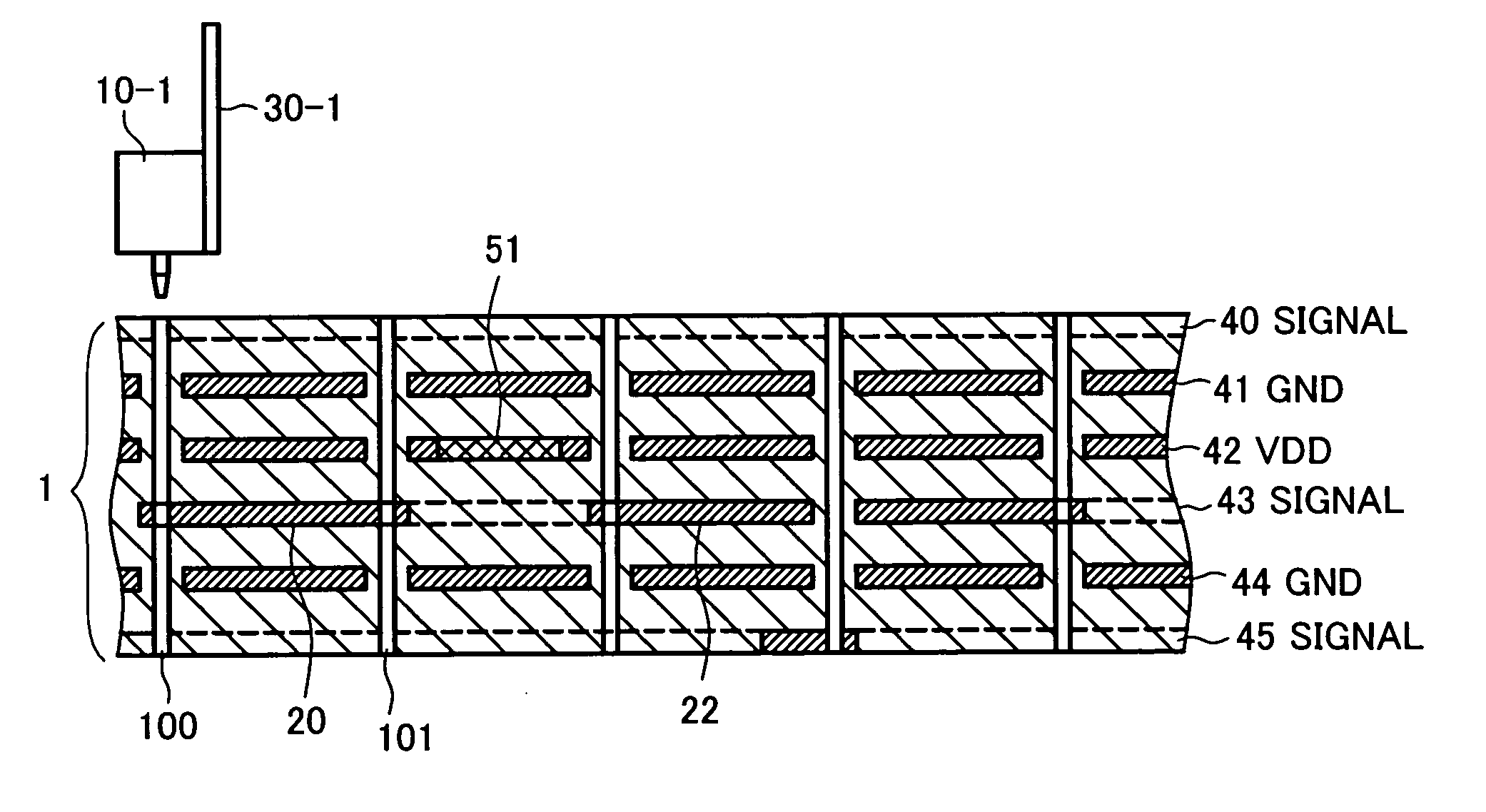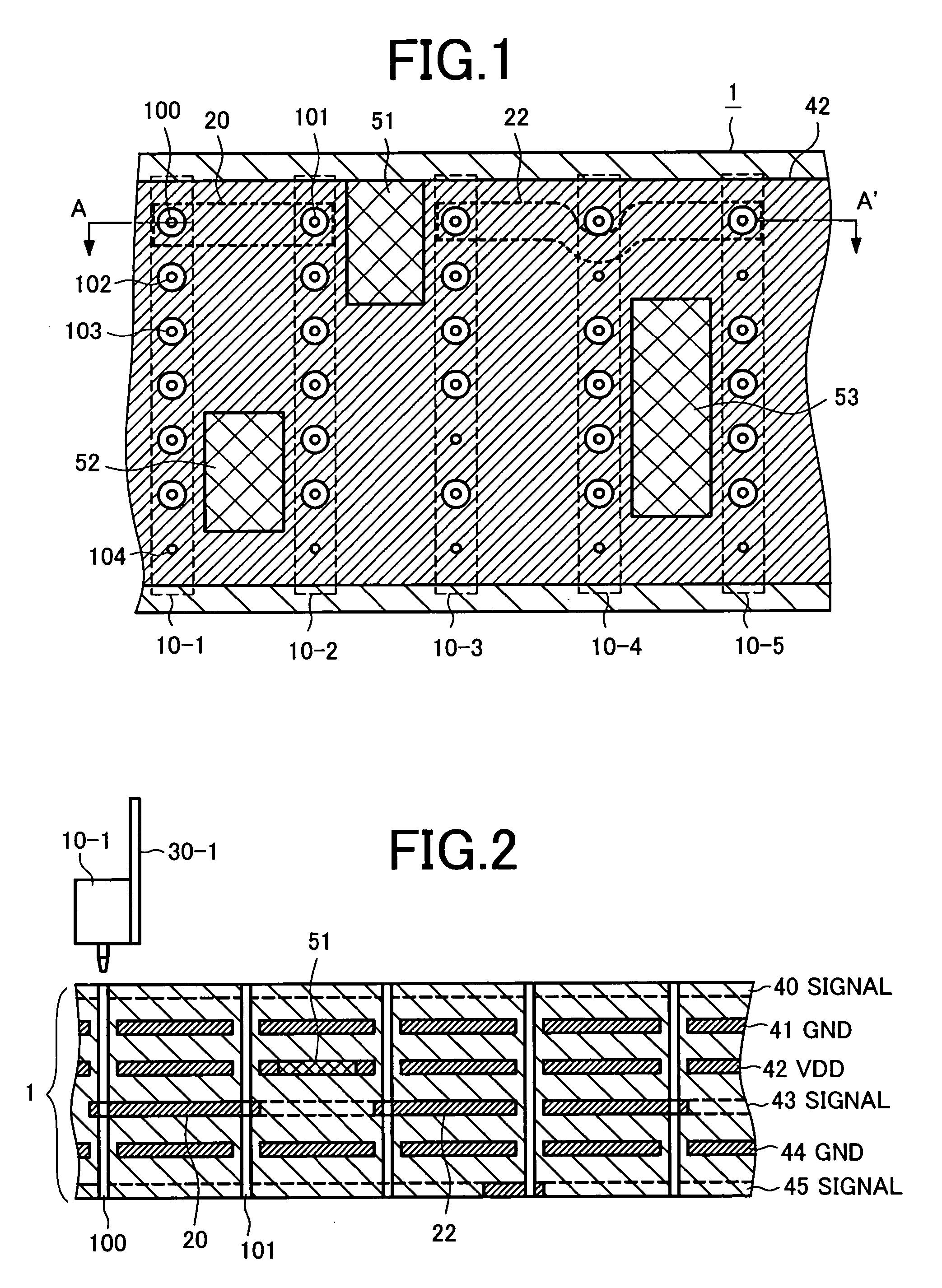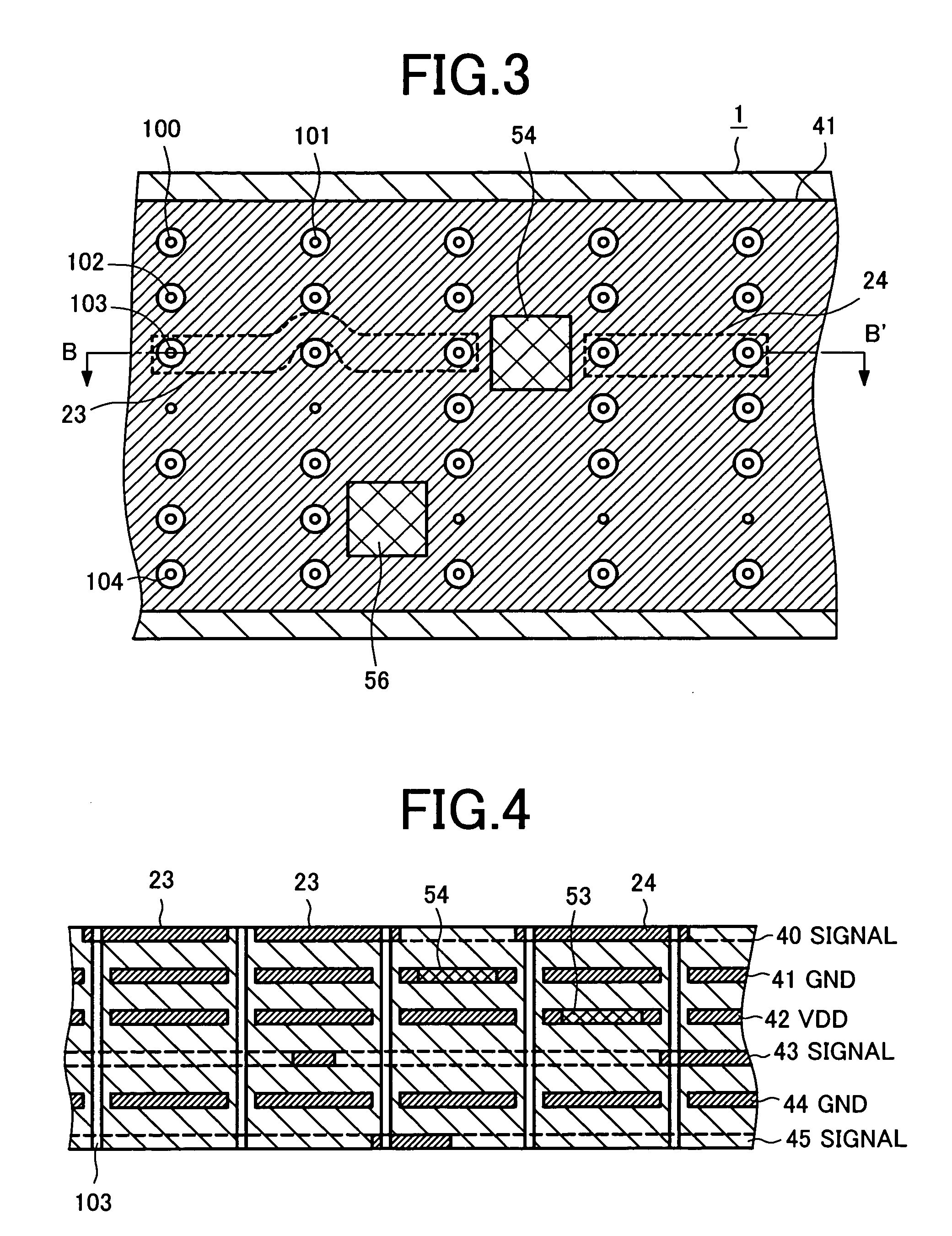Main board for backplane buses
a backplane bus and main board technology, applied in the direction of orthogonal pcbs mounting, cross-talk/noise/interference reduction, high frequency circuit adaptation, etc., can solve the problem of more significant signal attenuation, electrical restrictions on printed circuit boards, signal waveform disturbance, etc., to suppress crosstalk noise and power supply noise, the effect of reducing nois
- Summary
- Abstract
- Description
- Claims
- Application Information
AI Technical Summary
Benefits of technology
Problems solved by technology
Method used
Image
Examples
first embodiment
[0061] A first embodiment of the present invention is described below with reference to FIGS. 1 to 9.
[0062]FIG. 1 is a horizontal cross-sectional view of a motherboard for backplane buses according to the first embodiment of the present invention, showing a section extending along a power supply layer 42 (see FIG. 2).
[0063]FIG. 2 is a vertical cross-sectional view that shows section A-A′ of the above motherboard for backplane buses.
[0064]FIG. 3 is a horizontal cross-sectional view of the above motherboard for backplane buses, showing a section extending along a ground layer 41.
[0065]FIG. 4 is a vertical cross-sectional view that shows section B-B′ of the above motherboard for backplane buses.
[0066] Motherboard 1 is a multilayer wiring board, including a first signal layer 40 that connects connector wiring, a first ground layer 41, a power supply layer (VDD) 42, a second signal layer 43, a second ground (GND) layer 44, and a third signal layer 45. These layers are each stacked v...
second embodiment
[0086] A second embodiment according to the present invention will be described hereunder with reference to FIGS. 10, 11.
[0087]FIG. 10 is a vertical cross-sectional view of a motherboard for backplane buses according to the second embodiment, showing a section extending along an array of via holes.
[0088] In the present embodiment, a signal layer 43′ is added to the layer configuration shown in FIG. 2. The present embodiment is exactly the same as the first embodiment of FIGS. 1 to 4, except that a power supply layer 42 is formed as an EBG pattern only in an associated region 51 between independent electrical lines 20, 22 of a second signal layer 43. The region 51 is also a region present between independent wiring patterns 20′ and 22′ of the added signal layer 43′. The EBG pattern of the region 51, therefore, is also effective for cutting offnoise between the electrical lines 20′, 22′ of the added signal layer 43′.
[0089] Noise between independent signal nodes can be cut off simil...
third embodiment
[0091] A third embodiment according to the present invention will be described hereunder with reference to FIGS. 12, 13.
[0092]FIG. 12 is a horizontal cross-sectional view showing in part a power supply layer 42 of a motherboard for backplane buses according to the third embodiment.
[0093]FIG. 13 is a vertical cross-sectional view of section C-C′ of the above motherboard.
[0094] In addition to EBG patterns similar to those described in FIGS. 1, 2, the power supply layer 42 in the motherboard of the present embodiment has EBG patterns 51b, 52b, 53b, 54b, 55b, each of these patterns extending in a horizontal direction of FIG. 12. A majority of wiring patterns formed on the signal layer 43 extend horizontally to interconnect the pins located at the same positions in different connectors, and these patterns resemble, for example, wiring patterns 20, 21 of FIG. 12. The EBG patterns 51b, 52b, 53b, 54b, 55b are effective for cutting off the noise propagated between the above wiring pattern...
PUM
 Login to View More
Login to View More Abstract
Description
Claims
Application Information
 Login to View More
Login to View More - R&D
- Intellectual Property
- Life Sciences
- Materials
- Tech Scout
- Unparalleled Data Quality
- Higher Quality Content
- 60% Fewer Hallucinations
Browse by: Latest US Patents, China's latest patents, Technical Efficacy Thesaurus, Application Domain, Technology Topic, Popular Technical Reports.
© 2025 PatSnap. All rights reserved.Legal|Privacy policy|Modern Slavery Act Transparency Statement|Sitemap|About US| Contact US: help@patsnap.com



